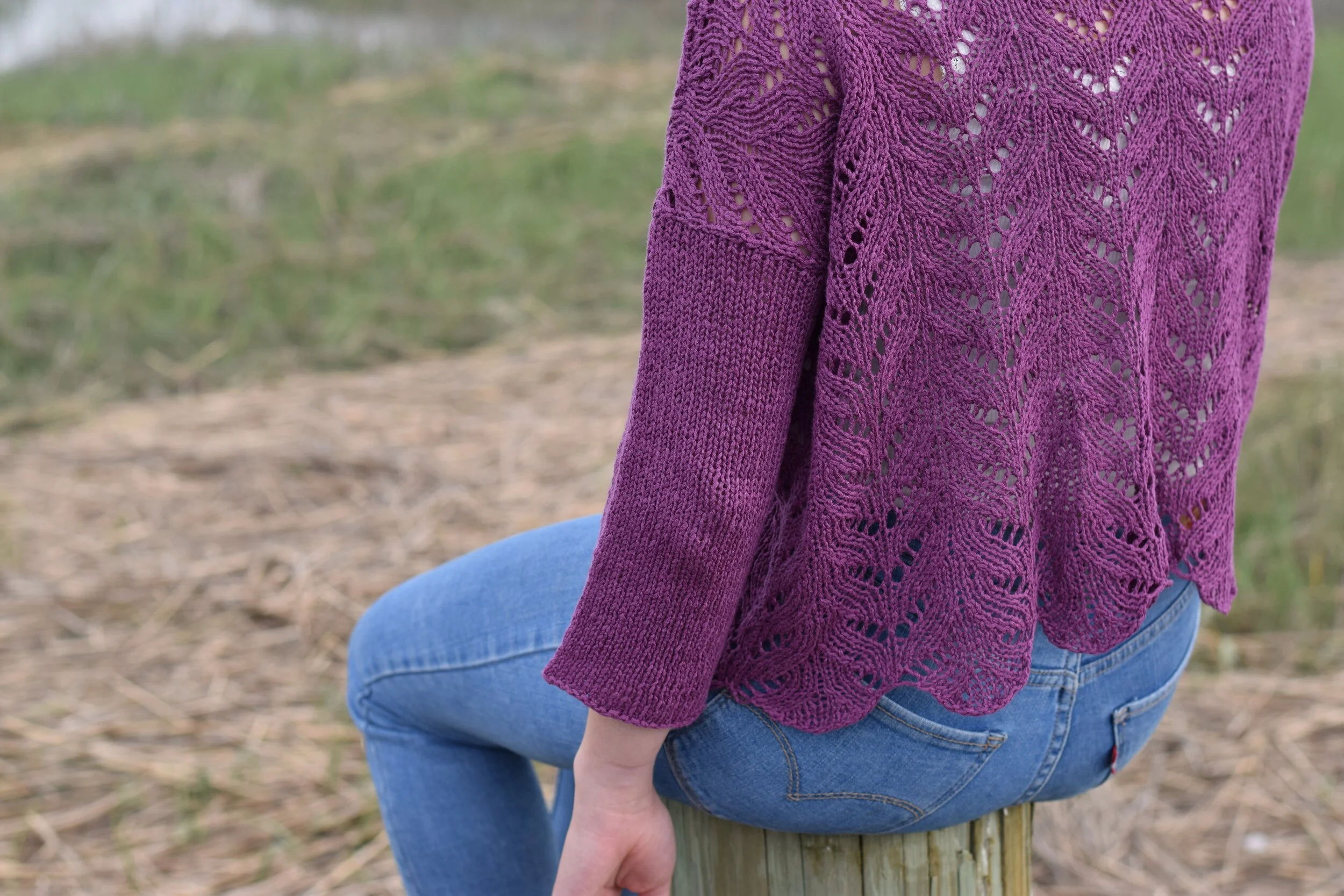Fudge Friday: Whatsa matter, yoke?
You might know there are a few ways to construct a yoke sweater. What’s a yoke you may ask? It’s a sweater in which the part above the armholes looks somewhat like a cone.
This is the schematic for Riparia, a yoke pullover. It’s upside down on purpose - because it’s worked from the top down.
When a yoke pullover is worked from the bottom up, 3 tubes are constructed are constructed first - the body and both sleeves. They are then joined and the yoke is completed with decreases to the neck, circularly in one piece.
Riparia is constructed from the top down, meaning that first the yoke is constructed - with increases, then the yoke is separated into 3 parts - body and sleeves - and then the pullover is finished by knitting 3 tubes.
Swatching for Riparia.
Now you can insert those yoke increases (or decreases) in a couple of ways, but the only way I knew about was the way I learned: increase between solid resting rows. In the swatch above, you can see the grayish taupe solid rows were where I inserted the increases.
However, you can also see that the pattern is not centered. When you get to the flower, it looks off.
So I wrote the pattern and handed it off to a sample knitter - not something I usually do. She wrote back to tell me it looked off, although the stitch counts worked. Enter my tech editor.
With one look, she told me I’d have to create wedge increases. What’s that you say? Think of a pie and then mark the slices. This is what wedge increases create. Instead of putting all the decreases you need in one round, you put them in in each wedge, like this:
Here’s the wedge representing one pattern repeat. The curls indicate increase placement and the wedge grows from 6 sts to 14 sts.
The stacked motifs are always centered in a wedge yoke design.
I love how Riparia turned out, but it was a long road to get there. The good news was that I learned that there’s more than one way to construct a yoke.









